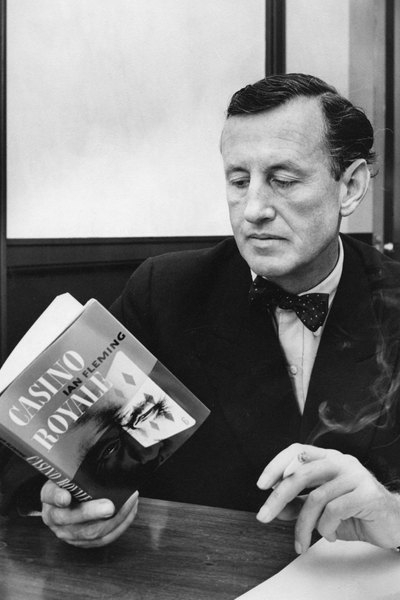
by Fiona Moore
The trees are down and the decorations put away, but the Christmas films are still clinging on at the cinemas. The splashiest of these, Chitty Chitty Bang Bang, is a charming but over-long crowd-pleaser that can be best summarised as “James Bond, but for children.”

Chitty Chitty Bang Bang movie poster
After all, it’s a screenplay by Roald Dahl from a story by Ian Fleming, produced by Cubby Broccoli, featuring a handsome protagonist who’s a mashup of Bond and Q, a love interest with a suggestively punny name, a magical car, glamourous footage of automobile races and international luxury travel, a cameo from Desmond Llewellyn, sinister Eastern Europeans who want to steal Western technological secrets….
But I’m getting ahead of myself. Chitty Chitty Bang Bang is actually two stories. The frame story involves Caractacus Potts, an Edwardian inventor (Dick van Dyke, who has fortunately decided not to bother attempting a British accent after his excruciating failure to sound like a Cockney in Mary Poppins). He is a widower with two children, whose inventions are charming and ahead of their time, including: a vacuum cleaner and a device for sending visual images by wireless; however, they fail to find a market.
He strikes up a friendship with Truly Scrumptious (Sally Ann Howes), daughter of a candy manufacturer (James Robertson Justice), who persuades her father to consider Potts’ latest invention, candy whistles called Toot Sweets, but when the whistles turn out to attract dogs her father is furious. Rejected, Potts decides to cheer up his children by buying and fixing up a roadster, which they name Chitty Chitty Bang Bang for the noises it makes, and takes the children and Truly on a seaside picnic, where he and Truly fall in love.
 Chitty Chitty Bang Bang takes flight
Chitty Chitty Bang Bang takes flight
And then we get the second story, told by Potts at the seaside to his children and Truly. In this story, the gadget-obsessed Baron of Vulgaria (Gert Fröbe, who played Goldfinger in the eponymous movie) sees the car and vows to steal it. After a long sequence where two bumbling Vulgarian spies try and fail to do this, the Baron succeeds in kidnapping Potts’ father (Lionel Jeffries), an absent-minded caricature of British imperialism. Potts, Truly and the children come to the rescue in Chitty, which is able to turn into a hovercraft and an airplane as needed.
They land in Vulgaria to discover that the country has no children, by order of the Baron, and the sinister Child-Catcher soon kidnaps Potts’ children as well. Aided by a toymaker (Benny Hill, of all people) and a cave-ful of children hiding away from the Child-Catcher, Potts and Truly rescue the children and their grandfather and bring about a “free state” in Vulgaria.
 The Baron and Baroness profess their love for each other
The Baron and Baroness profess their love for each other
Back in the frame story, Truly’s father hits on the idea of selling the candy whistles as dog sweets, and offers Potts a contract for the invention. The Potts fortune is made, and Potts and Truly can marry and live happily ever after.
The story-within-a-story was, to my mind, the weakest part of the movie. The Eastern European stereotypes were more than a little silly and boring, there was an unnecessarily nasty undercurrent of misogyny in that the Baron is constantly trying, and failing, to murder his wife for no good plot or character reason, and I’m really, really uncomfortable about the Child Catcher, a big-nosed bad guy who kidnaps children and takes them off to an unspoken but terrible fate. I’m also finding it a little difficult to imagine Benny Hill, a comedian best known for racy sketches about chasing pretty young women who are less than willing to cooperate, as a cuddly child-friendly character, but presumably the younger people in the audience won’t have this sort of contextualising detail.

See what I mean? Scary, and arguably antisemitic
Another problem, to my mind, is that despite Chitty Chitty Bang Bang itself being the named star of the movie, featuring heavily on the poster and other promotional materials, and getting a long opening montage showing its original career as a racing car, it’s barely in the story. It’s over an hour before Potts finally gets around to building the thing, and, after two exciting flying and hoverboating sequences, it disappears for ninety per cent of the Vulgaria storyline. If, like me, you were expecting a story centred around a fantastic car, you’re going to be disappointed.

We do get a car-versus-boat naval battle though
On the more positive side, the music is absolutely delightful, with songs like the title track, “Truly Scrumptious”, and “Hushabye Mountain” likely to be long-lasting hits. They were composed by the Sherman Brothers of Mary Poppins fame, who clearly know their stuff. Potts’ machines were designed by British cartoonist and found-object sculptor Rowland Emett, and they are well integrated into the action: a sequence where Potts cooks sausage and eggs for his children using a variety of silly contraptions is worth the price of admission, as is a brief sequence with an apparently sentient vacuum cleaner.
There are plenty of opportunities for van Dyke to showcase his skills as a dancer, in particular one in which he pretends to be a live-size marionette in order to infiltrate the Baron’s castle. The Edwardian setting of the movie is in line with the current craze for a kind of fantasy-Edwardiana of straw hats and candy stripes. British comedy fans can enjoy watching out for cameos from the likes of Barbara Windsor, Arthur Mullard and Richard Wattis.

The "Toot Sweets" production number, a candy factory fantasy to a catchy tune
However, at nearly two and a half hours, the movie is really far too long: there was a fifteen-minute intermission at the cinema where I saw it, which was just as well. I’m tempted to suggest that it should cut the Vulgaria storyline, but unfortunately that’s the only part of the movie with any real cinematic action, and without it you’d just be left with a cute but low-stakes love story about an inventor and an heiress. Three stars—most of them for the production, music and dancing.

![[February 4, 1969] Potts, Caractacus Potts: Chitty Chitty Bang Bang](https://i0.wp.com/galacticjourney.org/wordpress/wp-content/uploads/2024/01/Chittychittybangbangposter.jpg?resize=258%2C372)


![[September 3, 1963] An unspoken Bond (Ian Fleming's <i>On Her Majesty’s Secret Service</i>)](https://i0.wp.com/galacticjourney.org/wordpress/wp-content/uploads/2018/09/630902OHMSS-cover.jpg?resize=252%2C372)










